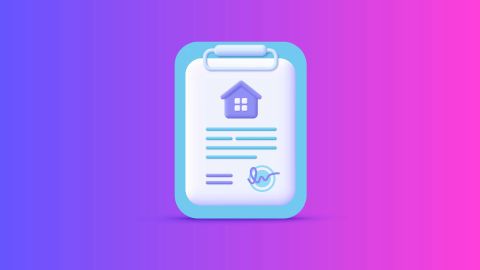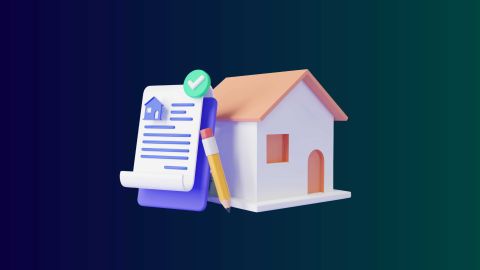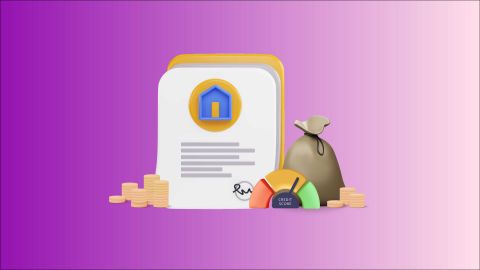What is PMAY - Urban
The "Pradhan Mantri Awas Yojana" or PMAY-Urban was initiated in 2015 as part of the broader 'Housing for All' (HFA) initiative. Within its framework, the PMAY-Urban program offers an advantageous Credit Linked Subsidy Scheme (CLSS) element. This facet enables individuals who choose to secure a home loan to benefit from an interest subsidy, with a cap of Rs. 2.67 lakh. This financial assistance is extended to eligible beneficiaries who seek housing loans for purchasing, constructing, or even reacquiring homes as part of the PMAY-Urban scheme.
Who are the beneficiaries of the PMAY(U)?
The beneficiaries of the Pradhan Mantri Awas Yojana - Urban (PMAY-U) are individuals and families from Economically Weaker Sections (EWS), lower-income groups (LIG), and middle-income groups (MIG) who do not own a pucca (permanent) house and wish to avail financial assistance for acquiring or constructing a home. The scheme aims to provide affordable housing options and reduce homelessness in urban areas of India.
PMAY Urban – Benefits
The Pradhan Mantri Awas Yojana - Urban (PMAY-U) offers a range of benefits aimed at promoting affordable housing and improving the living conditions of urban residents in India. Here are some key benefits of the PMAY-U scheme:
- Subsidised interest rates: One of the primary benefits of PMAY-U is the Credit Linked Subsidy Scheme (CLSS), which provides beneficiaries with interest subsidies on home loans. This reduces the burden of interest payments and makes homeownership more affordable.
- Financial assistance for home purchase/construction: PMAY-U provides financial assistance to eligible beneficiaries for either purchasing a new house or constructing one. This support helps individuals and families achieve their dream of owning a home.
- Affordable housing units: The scheme encourages the development of affordable housing units through partnerships with private developers, public agencies, and housing cooperatives. This increases the availability of reasonably priced homes for beneficiaries.
- Inclusivity: PMAY-U aims to include various segments of society, such as Economically Weaker Sections (EWS), lower-income groups (LIG), middle-income groups (MIG), women, minorities, and marginalised communities. This ensures that housing benefits reach a broad range of urban residents.
- Empowerment of women: The scheme gives preference to women beneficiaries or households with women ownership. This not only empowers women but also ensures their participation in decision-making regarding housing.
- Ownership title: Beneficiaries under PMAY-U receive legal ownership of the property, which contributes to their social and economic security.
- Improved quality of life: By providing affordable housing options, PMAY-U contributes to an improved quality of life for urban residents. Access to proper housing leads to better health, education, and overall well-being.
- Reduction in slums: The scheme seeks to address urban slums and provide alternative housing solutions to slum dwellers. This helps in upgrading living conditions and reducing congestion in urban areas.
- Economic growth: The construction and real estate sectors receive a boost due to increased demand for affordable housing, leading to job creation and economic growth.
- Environmental sustainability: PMAY-U encourages the adoption of environmentally sustainable practices in housing construction, promoting energy efficiency and reduced carbon footprint.
- Digital platform: The PMAY-U program utilises technology for transparent and efficient implementation. Beneficiaries can track their application status and updates through an online platform.
- Direct Benefit Transfer (DBT): The financial assistance provided under PMAY-U is often disbursed through direct bank transfers, minimising the chances of fraud and ensuring that the funds reach the intended beneficiaries.
Features of PMAY-U
The Pradhan Mantri Awas Yojana - Urban (PMAY-U) comes with several distinctive features that are designed to address the challenges of urban housing and promote affordable living for all. Here are the key features of PMAY-U:
1. Inclusivity: PMAY-U caters to various income groups, including Economically Weaker Sections (EWS), Lower Income Groups (LIG), and Middle Income Groups (MIG), ensuring that a wide range of urban residents can benefit from the scheme.
2. Credit linked subsidy scheme (clss): One of the central features of PMAY-U is the CLSS, which provides interest rate subsidies on home loans. This makes housing loans more affordable for beneficiaries, reducing the overall cost of homeownership.
3. Benefit categories: PMAY-U is divided into four main components based on income groups:
- In-Situ Slum Redevelopment (ISSR): Focuses on improving existing slums.
- Credit Linked Subsidy Scheme (CLSS): Provides interest subsidies for home loans.
- Affordable Housing in Partnership (AHP): Promotes public-private partnerships for affordable housing projects.
- Beneficiary-led Construction (BLC): Supports EWS beneficiaries in constructing their homes on their own land.
4. Area of Implementation: PMAY-U focuses on urban areas, including cities, towns, and other urban centers. This distinguishes it from the rural counterpart, Pradhan Mantri Awas Yojana - Gramin (PMAY-G), which targets rural housing.
5. Preference for women ownership: The scheme gives preference to households with female ownership or co-ownership, aiming to empower women and promote gender equality in property ownership.
6. Affordable housing projects: PMAY-U encourages the development of affordable housing projects through public-private partnerships. This boosts the supply of affordable homes in urban areas.
7. Enhanced financial inclusion: By providing financial support and access to formal housing finance, PMAY-U contributes to greater financial inclusion for low- and middle-income urban residents.
8. Housing for All: PMAY-U aligns with the broader "Housing for All" mission, aiming to ensure that every eligible urban family has a pucca house by a specified timeline.
PM Awas Yojana 2023 Key Parameters
Particulars |
MIG I |
MIG II |
Household Income (Rs. p.a) |
6,00,001-12,00,000 |
12,00,001-18,00,000 |
Eligible Housing Loan Amount for Interest Subsidy (Rs.) |
Up to 9,00,000 |
Up to 12,00,000 |
Interest Subsidy (% p.a.) |
4.00% |
3.00% |
Maximum loan tenor (in years) |
20 |
20 |
Maximum dwelling unit carpet area |
160 Sq. m. |
200 Sq. m. |
Discount Rate for Net Present Value (NPV) calculation of interest subsidy (%) |
9.00% |
9.00% |
Max. Interest Subsidy Amount (Rs.) |
2,35,068 |
2,30,156 |
Lump sum amount paid per sanctioned to PLIs in lieu of Processing Fee (Rs.) to the extent of loan amount on which subsidy is applicable |
2,000 |
2,000 |
Application of scheme on existing home loans sanctioned on or after |
01.01.2017 |
|
Applicability of No Pucca House |
Yes |
Yes |
Woman Ownership/ Co-ownership |
Not mandatory |
Not mandatory |
Quality of House/ Flat Construction |
National Building Code, BIS Codes and as per NDMA Guidelines adopted |
|
Approvals for the Building Design |
Compulsory |
|
Basic Civic Infrastructure (water, sanitation, sewerage, road, electricity etc.) |
Compulsory |
|
*The details mentioned above are based on the scheme framed by the Government of India under the Pradhan Mantri Awas Yojana (PMAY-Urban). These are subject to change as and when there is a change in the scheme by the Government of India. Benefits under this scheme can be availed only for home loan offered by Bajaj Finserv.
About Pradhan Mantri Awas Yojana Urban (PMAY-U) - 2023
The Pradhan Mantri Awas Yojana (PMAY) scheme was launched by the Government of India to boost the affordability of houses against an inflated real estate sector. The scheme aims to achieve its objective of “Housing for All” by 31 March 2022. The year marks the 150th birth anniversary year of Mahatma Gandhi, and the scheme aims to meet this goal by constructing 20 million houses across the nation. Based on the areas that it caters to, this Yojana has two parts, Urban and Gramin.
1. Pradhan Mantri Awas Yojana – Urban (PMAY-U)
At present, the PMAY-HFA(Urban) has around 4,331 towns and cities under this scheme. It also includes urban development authority, special area development authority, industrial development authority, development area, notified planning, and every other authority which is responsible for urban planning and regulations.
The scheme has progressed in the following three phases:
Phase 1: To cover 100 cities in select states and UTs between April 2015 and March 2017.
Phase 2: To cover 200 additional cities between April 2017 and March 2019.
Phase 3: To cover the remaining cities between April 2019 and March 2022.
As per data from the Ministry of Housing and Urban Affairs, as of 1st July 2019, the progress of PMAY-U in all states and union territories is as follows:
- Sanctioned houses: 83.63 lakh
- Completed houses: 26.08 lakh
- Occupied houses: 23.97 lakh
According to the same data, the total amount deemed to be invested is Rs. 4,95,838 crore out of which, Rs. 51,414.5 crore has already been released.
In the 52nd meeting of the Central Sanctioning and Monitoring Committee (CSMC) held on 20th January 2021, the Union Housing and Urban Affairs Ministry said that the construction of 1.68 lakh houses has been approved by the government of India under the Pradhan Mantri Awas Yojana Urban (PMAY-Urban) Scheme.
2. Pradhan Mantri Awas Yojana Gramin (PMAY-G)
The Pradhan Mantri Awas Yojana Gramin was formerly called the Indira Awas Yojana and was renamed in March 2016. It is targeted at promoting accessibility and affordability of housing for all of rural India with the exceptions of Delhi and Chandigarh.
The objective is to provide financial assistance to the homeless and those residing in decrepit houses to assist them in the construction of pucca houses. Beneficiaries living in the plains receive up to Rs. 1.2 lakh and those in North-Eastern, hilly areas, Integrated Action Plan (IAP), and difficult areas can avail up to Rs. 1.3 lakh owing to this housing endeavour. At present, as per data available from the Ministry of Rural Development, 1,03,01,107 houses have been sanctioned in all states and UTs.
In an attempt to boost purchases in the real estate sector, the government launched PM Awas Yojana, and the cost of this housing development will be shared between the central and state government in the following ways:
- 60:40 for plain regions
- 90:10 for north-eastern and hilly areas
Beneficiaries of the PMAY scheme
Beneficiaries of the PMAY scheme are and will be identified as per data available from the Socio-Economic and Caste Census (SECC) and include:
- Scheduled castes and scheduled tribes
- Non-SC/ ST and minorities under BPL
- Freed bonded labourers
- Next of kin and widows of paramilitary forces and individuals killed in action, ex-servicemen, and those under a retirement scheme
PMAY eligibility
PMAY eligibility criteria are based on income categories, citizenship, family ownership, property ownership, age, female ownership or co-ownership, and adherence to the Credit Linked Subsidy Scheme (CLSS).
The scheme caters to economically weaker sections (EWS), lower-income groups (LIG), and middle-income groups (MIG) in urban and rural areas. It emphasizes female ownership or joint ownership, with a preference for those who do not own a house under any government housing scheme.
The beneficiary's age should be at least 18 years, and thorough verification is conducted by implementing agencies. Application processes and eligibility details may be subject to updates, so individuals should refer to the official PMAY website or relevant government sources for the latest information.
How to apply online for PM Awas Yojana
Here is the step-by-step process application process for PM Awas Yojana:
For urban PMAY:
- Visit PMAY-Urban website: Go to https://pmayurban.gov.in/.
- Select "Citizen Assessment": Click on "Citizen Assessment" or "Apply Online."
- Choose your category: Select EWS/LIG/MIG based on your income group.
- Fill in details: Provide personal information, income details, Aadhaar number, and property information.
- Submit application: Submit your application online.
- Application Verification: Authorities will verify your application.
- Check status: Monitor your application status on the website.
For rural PMAY:
- Visit PMAY-Gramin website: Go to https://pmayg.nic.in/netiay/home.aspx.
- Select "IAY/PMAYG": Choose "IAY/PMAYG" on the homepage.
- Click "Stakeholder": Opt for "Stakeholder" and then "Beneficiary."
- Fill registration form: Complete the registration form with personal details, Aadhaar number, and bank account information.
- Submit application: Submit your application online.
- Application Verification: Gram Panchayat and authorities will verify your application.
- Check status: Track your application status on the website.
Components of the PM Awas Yojana 2023
There are four primary components of this scheme:
- Credit Linked Subsidy Scheme (CLSS)*
CLSS provides subsidies on the home loan interest payable to those eligible for this scheme. The PMAY subsidy rate, subsidy amount, maximum loan amount, and other details are listed in the table below:
|
EWS |
LIG |
Maximum home loan amount |
Up to Rs. 3 lakh |
Rs. 3 - 6 lakh |
Interest subsidy |
6.50%* |
6.50%* |
Maximum interest subsidy amount |
Rs. 2,67,280 |
Rs. 2,67,280 |
Maximum carpet area |
60 sq. m. |
60 sq. m. |
|
MIG I |
MIG II |
Maximum home loan amount |
Rs. 6 - 12 lakh |
Rs. 12 - 18 lakh |
Interest subsidy |
4.00% |
3.00% |
Maximum interest subsidy amount |
Rs. 2,35,068 |
Rs. 2,30,156 |
Maximum carpet area |
160 sq. m. |
200 sq. m. |
Home loans under the CLSS have a maximum tenor of 20 years. NPV or the net present value is evaluated at a discounted rate of 9% of the interest subsidy
- "In-situ" slum redevelopment (ISSR) using land as a resource
The scheme aims to rehabilitate slums with land as a resource in association with private organisations to provide houses to families living in such areas. The Central Government determines the prices of the houses, and the beneficiary contribution (if any) is decided by the respective state or UT.
- Affordable Housing in Partnership (AHP)
Affordable Housing in Partnership (AHP) provides financial assistance to the tune of Rs. 1.5 lakh on behalf of the Central Government to EWS families for the purchase of houses. State and UTs can partner with their agencies or private sector to develop such housing projects.
- Individual house construction or enhancement led by beneficiaries
This component of PM Awas Yojana targets EWS families who cannot avail the benefits of the previous three components. Such beneficiaries will avail financial assistance from the Central Government of up to Rs. 1.5 lakh that can be used to fund the construction of a house or enhancing an existing one.
Disclaimer:
The validity of the PMAY scheme has not been extended.
- The EWS/ LIG schemes have been discontinued w.e.f. March 31, 2022
- The MIG schemes (MIG I and MIG II) have been discontinued w.e.f. March 31, 2021
PMAY frequently asked questions
Pradhan Mantri Awas Yojana – Urban (PMAY-U), As the name suggests, this scheme focuses on providing low-cost, pucca homes to the poor in urban locations across India. The PMAY-U scheme has the same aim as the PMAY scheme – to provide housing for all (HFA) by 2022.
PMAY, or the PM Awas Yojana, is a government scheme that focuses on providing housing for all by 2022. The PMAY scheme provides an interest subsidy of up to 6.5% on home loans through four CLSS categories – EWS, LIG, MIG I, and MIG II.
The following are the PMAY Eligibility criteria for individuals and families:
Income Group |
PMAY ELigibility Criteria |
Economically Weaker Section (EWS): |
Families with an annual income up to Rs. 3 lakh. |
Low Income Group (LIG): |
Families with an annual income between Rs. 3 lakh and Rs. 6 lakh. |
Middle Income Group I (MIG I): |
Families within an annual income between Rs. 6 lakh and Rs. 12 lakh. |
Middle Income Group II (MIG II): |
Families with an annual income between Rs. 12 lakh and Rs. 18 lakh. |
This includes women belonging to EWS and LIG categories as well as Scheduled Caste (SC), Scheduled Tribe (ST), and Other Backward Class (OBC).
In addition to the above, applicants must also meet the following criteria:
- Applicants must not own a house in any part of the country
- Applicants should not have availed benefits of any other housing scheme offered by the State or Central Government
You can apply for PMAY:
- Online
You can visit the official website to apply online using a valid Aadhaar Card - Offline
Apply offline by filling up a form available at a Common Service Centre (CSC). You must pay Rs. 25 + GST for the form.
Those eligible for the scheme can check their name in the Pradhan Mantri Awas Yojana list by following these few steps:
- Visit the official website
- Click ‘Search Beneficiary’
- Enter the Aadhaar number
- Click ‘Show’.
Existing home loan borrowers are eligible for this scheme provided they fulfill all the relevant eligibility criteria.
The PM Awas Yojana has played a significant role in providing affordable housing. The role of this scheme is not limited to making housing accessible and affordable to all. It has also created ample job opportunities in the real estate sector. This scheme, along with the inclusion of RERA, led to the creation of about 6.07 crore jobs across the nation.








